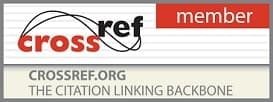2024, Vol. 8 Issue 1, Part A
Anthropometry based hamstring graft size prediction in Kashmiri population
Author(s): Dr. Shahan Malik, Dr. Umer Mehraj, Dr. Azad Ahmad Shah, Dr. Aiman Ahmad Wani and Dr. Adnaan Nazir Shahdar
Abstract:
Background and Aim: As the use of autograft hamstring tendons for ACL reconstruction increases, it becomes necessary to identify those patients at risk for having hamstring tendons of inadequate length or diameter. Preoperative estimation of graft parameters can be useful while using hamstring grafts. Anthropometric parameters may be an easy way to predict the length and diameter of hamstring tendons. Identifying patients who are at risk for inadequate graft dimensions allows for proper preoperative planning, arrangement of alternative graft sources (such as BPTB, quadriceps tendon, peroneal tendon or other allograft sources). A prospective study was conducted to find the correlation between different anthropometric parameters of the patients on the length and diameter of the graft in Kashmiri population.
Materials and Methods: In this study a total of 30 patients were included who underwent ACL reconstruction with hamstring autograft. The anthropometric parameters like age, height, weight, thigh length and girth, tibial length, calf girth etc were recorded prior to surgery. Intraoperative measurement of hamstrings was made, including absolute length of semitendinosus and gracilis and diameter of the final prepared graft. All measurements were obtained after blunt removal of attached muscle. Correlation coefficients were used to determine the relationship between the outcome variable (hamstring graft dimensions) and the predictor variables (age, gender, height, length, body mass index).
Results: This study showed a strong correlation between height of the patient and length of both semitendinosus and gracilis. Thigh length was found to be significantly correlated with graft length. Taller patients with longer limb lengths and thigh length tend to have a longer graft length. A statistically weakly significant correlation between weight and graft length was also noted. BMI, tibial length and calf girth didn’t show any correlation with the graft parameters.
Conclusion: Anthropometric measurements such as weight, BMI, tibial length, calf girth cannot be used as definitive predictors for the hamstring graft diameter but height of the patients and thigh length can be taken as good predictor.
Pages: 24-26 | 137 Views 61 Downloads

How to cite this article:
Dr. Shahan Malik, Dr. Umer Mehraj, Dr. Azad Ahmad Shah, Dr. Aiman Ahmad Wani, Dr. Adnaan Nazir Shahdar. Anthropometry based hamstring graft size prediction in Kashmiri population. Nat J Clin Orthop 2024;8(1):24-26 DOI: https://doi.org/10.33545/orthor.2024.v8.i1a.429






